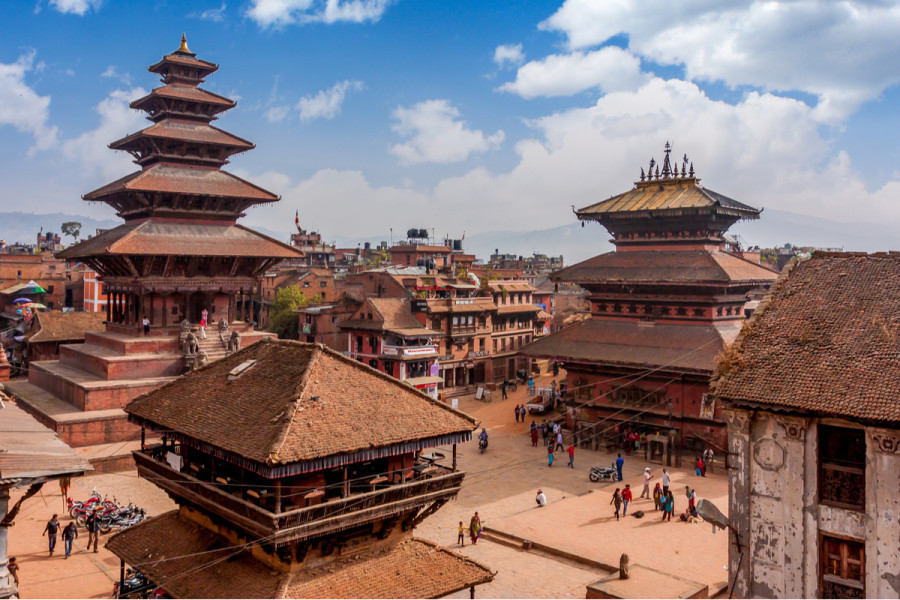Columns
Redefining heritage conservation
Viewing monuments only as economic assets has greatly limited conservation efforts.
Sanjay Adhikari & Nishant Pokharel
There was a great clamour last year when the New York-based Rubin Museum of Art offered a $20,000 grant for a three-room display in Kathmandu’s 11th-century Itumbaha Museum. For some, Rubin’s grant was a step forward, and the museum’s construction was a “long-realised dream”. However, for people opposing the move, it was absurd that a “museum” in one of the oldest and most important of the 28 vihars should even be consecrated—that too with the help of a disputed American museum.
Rubin Museum is involved in countless controversies. In an investigative report by Al Jazeera titled “The great plunder”, the alleged antique smuggler Deepak Shakya named the Rubin Museum a connection. Partnering with the Rubin Museum, which allegedly holds countless stolen statues of gods and goddesses, would be questionable and foolish.
Besides questioning Rubin’s involvement, the clamour had to do with a philosophical position, too. Creating a museum where an “item” is presented to be “observed” is disparaging. After all, it is not only an item but a “goddess of worship”. Similarly, it is not just a question of Itumbaha but our contemporary conservation practices. The Itumbaha Museum controversy raised questions about how, why, and for whom we should conserve.
The idea of conservation
The Western notion of conservation, often limited to the creation of museums, monuments, stamping postcards and guided tours, has links with capitalist notions of consumption. Such conservation severs heritage’s link with the culture and community that worship and own it. But the interface between community and heritage is a solemn and earnest connection. Without the bond between the two, heritage is reduced to mere architectural deliberation, and conservation is profoundly limited to preserving the form.
For example, what would happen even if the monuments of Taleju Bhawani and Kumari Chhen remained without the jatras and pujas? What would happen if the gods and goddesses of worship were held captive in museum glass? What benefit does conservation have? Conservation acts can succeed only when the local communities linked with the heritage are appreciated.
The Venice Syndrome can better illustrate the problem. In Venice, we see a classic example of gentrification and capitalistic invasion. The city—in all its magnificence—is now uninhabitable, not because no one wants to but because no one can afford to. Cramped with cafes, hotels, and different high-end amenities, the city is so expensive that residents have had to move to the suburbs. The occupants of Venice's ancient apartments are affluent Europeans. Individuals trying to understand the authentic Venetian life will be dumbfounded to see that it has almost disintegrated.
Nepal, too, is experiencing an escalation of gentrification. Old Newa homes are being bought to accommodate hotels and shopping avenues. Because of soaring real-estate prices, it has become too costly for the residents to live in those areas. Such a drive can isolate the local community and its heritage, severely hampering the conservation movement.
Boudha is a prime example of Nepal’s gentrification and market invasion. The area is filled with shopping avenues and high-end cafes. Boudha was once surrounded by traditional structures, which are non-existent today. At present, concrete-based buildings surround the 13th-century stupa, overshadowing the heritage itself.
The International Council on Monuments and Sites (ICOMOS) State of Conservation Report (1998) stated that a single overriding issue in protecting heritage sites in Kathmandu Valley is controlling damage and illegal development. The report said, “The traditional houses and commercial buildings which form the essential setting are at great risk and are subject to extreme pressure.” It also indicated that “If redevelopment continues at the present rate and is not curved by effective development controls, the authenticity of World Heritage site will be so severely damaged as to compromise its outstanding universal value.”
Accordingly, Nepal was kept on the danger list from 2003 to 2007. The government decided to reduce the core zone boundary to escape UNESCO sanctions. Hence, once part of the core zone, buildings now lie within a buffer zone. Consequently, the urban morphology surrounding the monument was destroyed. The buildings of the 17th and 18th centuries were dismantled to make space for concrete avenues. While some buildings aimed to retain historic façade using dachi appa (veneer bricks), the structure primarily constitutes modern substances like concrete and steel. The historic buildings, in reality, didn’t preserve any of their originality. The skill, materials, technology and intangible heritage of shilpa-sastra were destroyed.
The conceptions limiting heritage as a singular monument caused the death of countless intangible heritages. Viewing monuments only as economic assets has profoundly limited their conservation efforts. The ongoing debate surrounding heritage conservation oscillates between viewing heritage mainly through a cultural or economic lens. Conservation efforts stimulate tourism, benefiting local communities and helping drive preservation initiatives. But, it is essential to recognise that prioritising commercially driven conservation has led to the destruction of some heritage sites.
Redefining conservation
Heritage conservation efforts in Nepal have barred greater community participation. Inspired by Western conservation theory, Nepali authorities have reduced conservation to protecting singular monuments. However, unlike the Pantheon, Colosseum, or Egyptian pyramids (where no one worships and no one stays), Nepal’s monuments are still places of worship and spaces of dwelling.
While we conserve to show our cultural aesthetics, history and material objects, we must realise that we will sacrifice our inherent dharmic and cultural values. Our heritage might be a marketable attraction for foreigners, but for us, it is a city where we dwell. Community participation in heritage conservation will make it adequate. An exclusionary Western conservation approach can result in cultural stagnation, environmental degradation and social destruction.
World Heritage Day was celebrated on April 18 with the slogan “Discover and experience diversity.” This slogan perfectly portrays how heritage is not only objects and places but also customs, practices, artistic expression, and values. However, if we don’t change our conservation philosophy, the diverse customs, practices, expressions, and values will be incessantly impinged upon. Protecting objects and structures isn’t enough without conserving these values.
We must realise that conservation, in its Western idealism, inspired by Western-derived charters, methods and conservation philosophy, is unfit for our reality as a developing culture. Hence, we must redefine our conservation philosophy concerning the symbolic, dharmic and naturalistic values that are significant to us.




 20.12°C Kathmandu
20.12°C Kathmandu
















